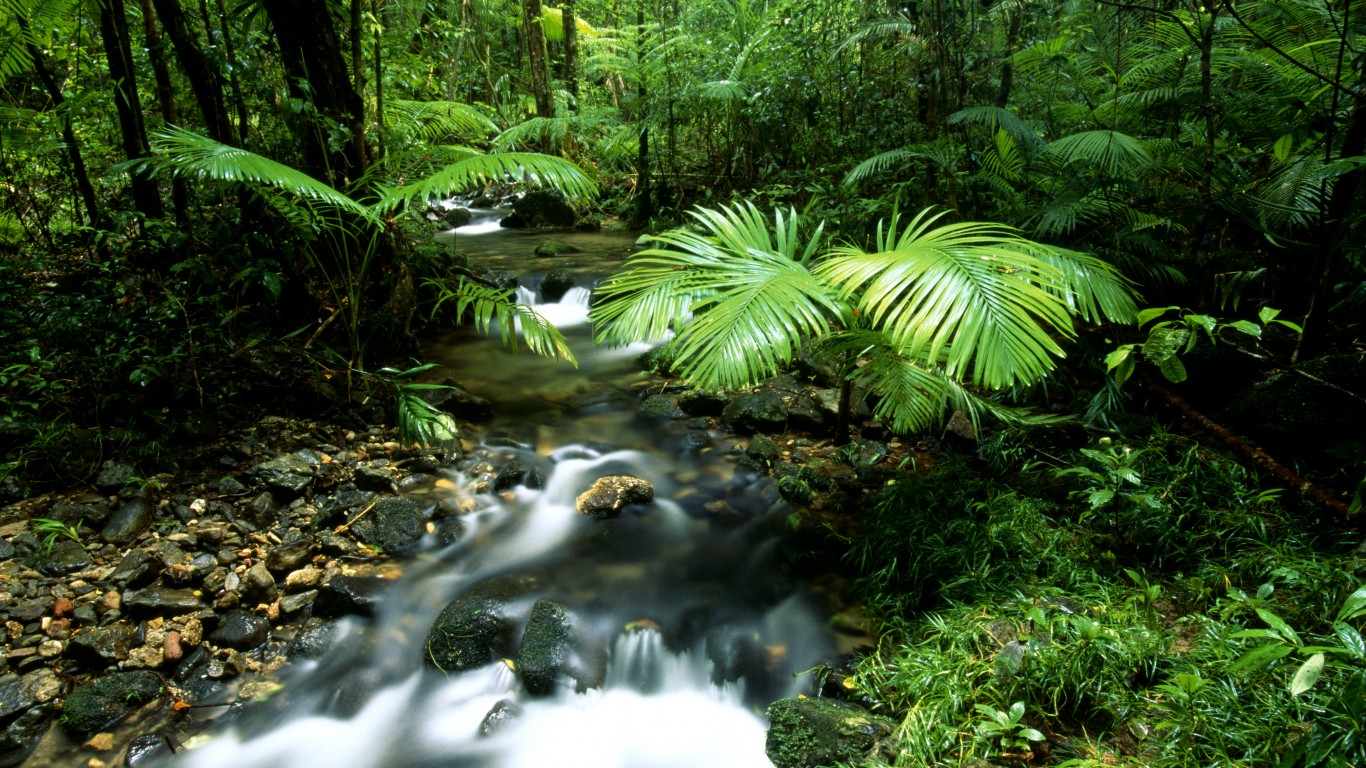
Most people who will never travel to more exotic locations will nonetheless recognize images of Mount Kilimanjaro topped with its legendary snows or the Great Barrier Reef and its rich marine life. But these iconic natural wonders, along with many others, are losing their struggle with climate change and may be completely lost to future generations.
As temperatures warm, sea levels rise, and storms intensify, causing food insecurity and displacement of entire populations, natural landmarks that may seem invulnerable to the ravages of climate are also seriously threatened. (These are the 20 countries responsible for nearly all global emissions.)
To find natural landmarks already damaged or destroyed by climate change, 24/7 Wall St. reviewed several sources, including International Union for Conservation of Nature’s Climate change now top threat to natural World Heritage – IUCN report, international environmental organizations, and adventure travel companies, among other sources.
The IUCN study found that 30% – 83 out of 252 – of natural World Heritage sites are threatened by climate change. Their status is described as being “of significant concern,” and 7% of all sites, including the Great Barrier Reef, are classified as “critical.”
While invasive species, human activity, and traditional weather patterns all take their toll on the natural world, the threats from climate change have overtaken other factors in the loss of natural landmarks. Storm surges are pushing salt into farmland and freshwater reserves; sea level rise is threatening the very existence of islands and atolls; rising temperatures are melting glaciers and drying up lakes; and heat and drought are inviting the spread of highly destructive wildfires. (These are the 30 most destructive wildfires in the U.S. this century.)
These are some of the world’s natural landmarks that have already experienced severe damage from climate change.
Click here to see natural landmarks already damaged or destroyed by climate change





